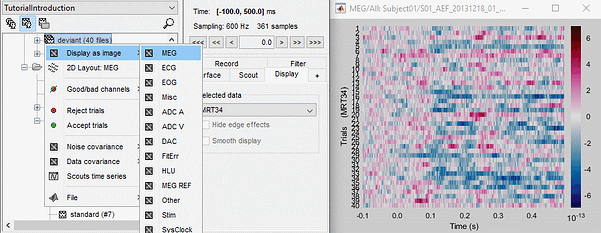Hello François,
I downloaded a free EEG dataset and imported it into the Brainstorm auditory stimulation protocol as raw data. After that, I extracted the epochs. I am working on correlated-source localization, and my dataset includes several event types such as oddball, response, oddball and response, etc.
My first question is: Which of these event categories should I extract and use as the input to my source-localization method in order to recover the correlated auditory sources? The dataset is related to the P300 paradigm.
My second question concerns the oddball condition. For example, the oddball category contains 28 epochs/files. To prepare the input for my algorithm, I assume that I should average these epochs into a single data matrix. However, I am not sure whether these 28 oddball epochs are phase-aligned in Brainstorm.
If they are not phase-aligned, what is the recommended way to align them before averaging?
For averaging, I used the Process > Average > Average files option in Brainstorm. I would appreciate it if you could confirm whether this is the correct procedure for this paradigm.
Thank you very much for your guidance.
